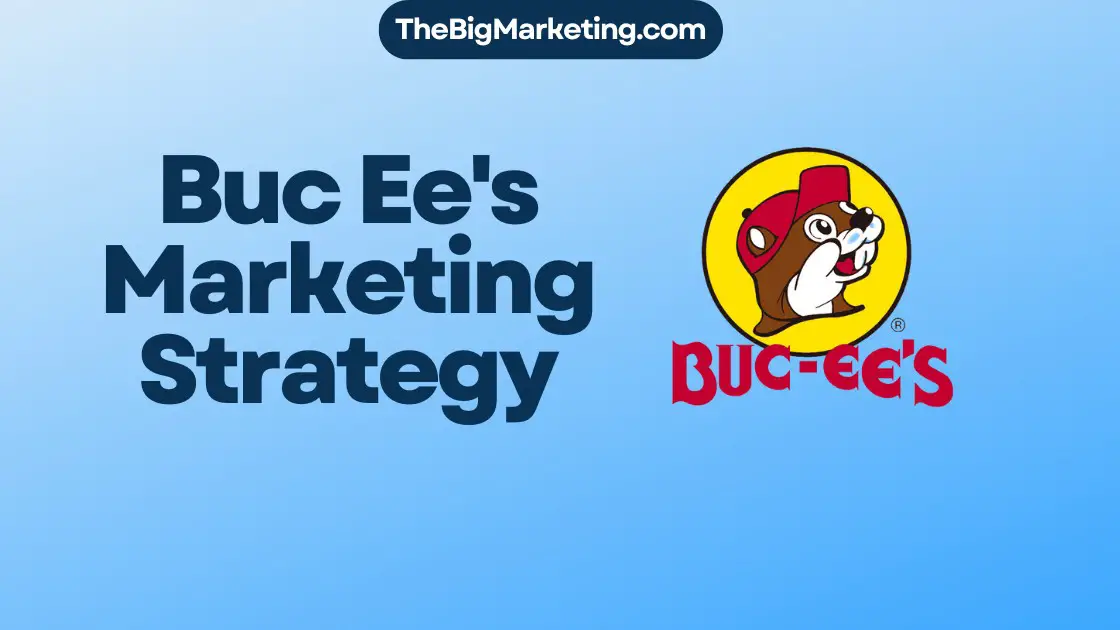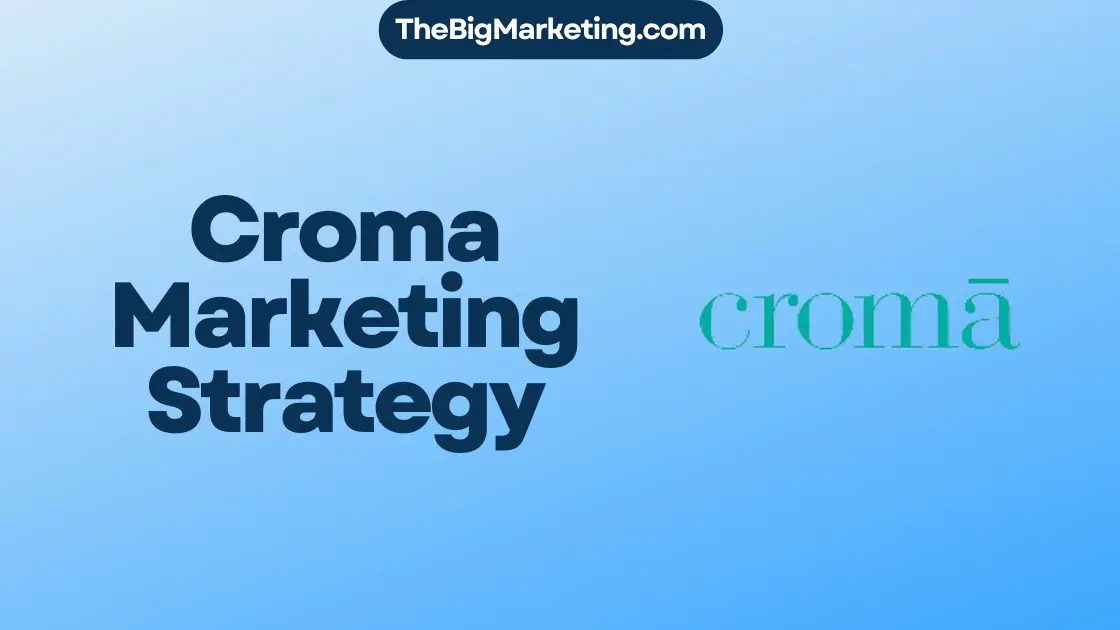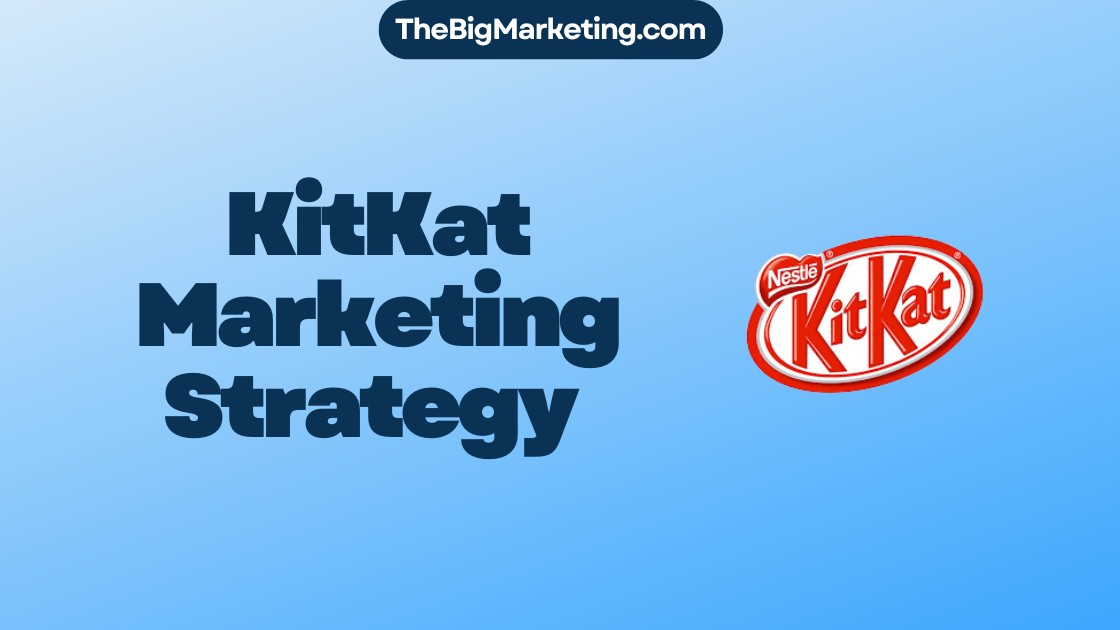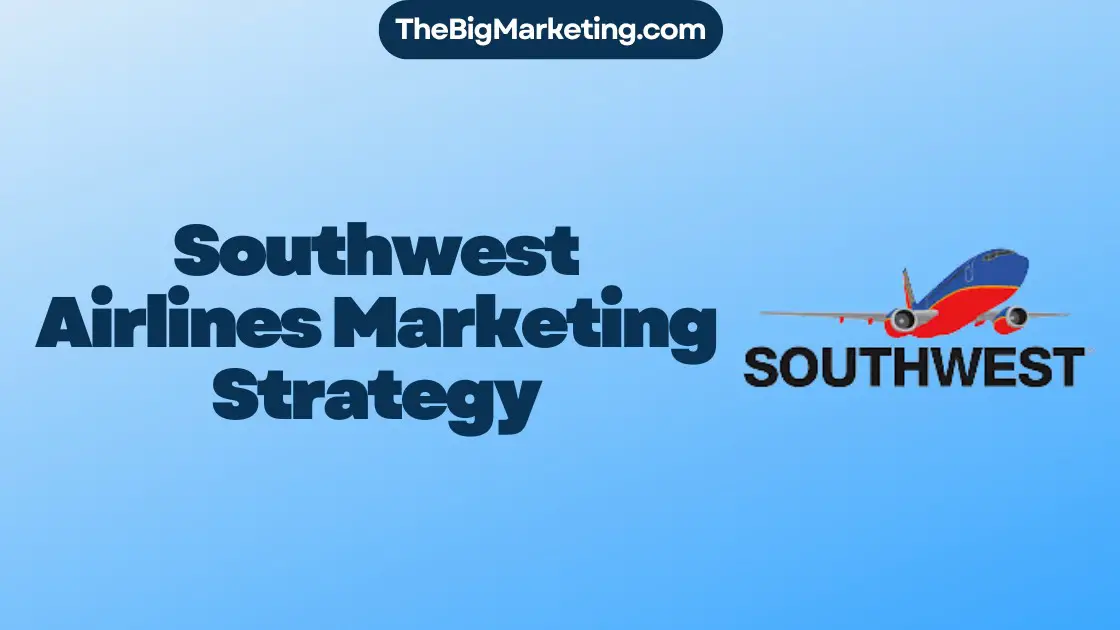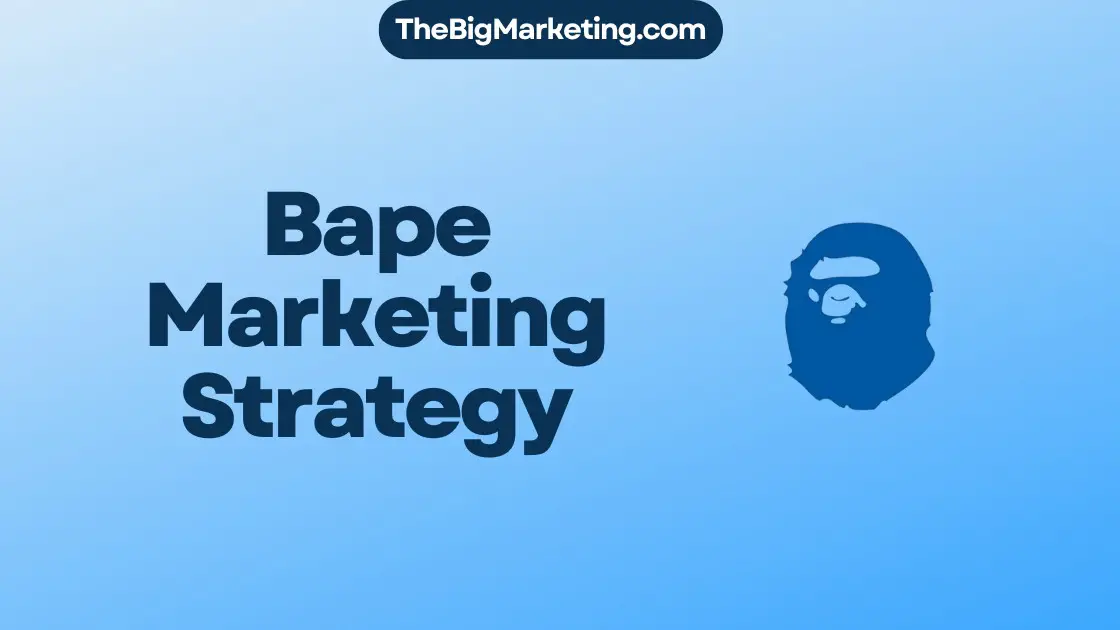Interviews for creative marketing specialist positions are a critical step for candidates to showcase their creativity, strategic thinking, and ability to execute effective marketing campaigns. This unique role requires a blend of artistic talent and marketing acumen to develop compelling content that resonates with target audiences. To help candidates prepare for such interviews, we have compiled a list of the top 33 creative marketing specialist interview questions along with insightful answers.
Navigating through these questions and answers will equip applicants with the knowledge and confidence needed to make a strong impression during their interviews. From understanding the latest trends in digital marketing to demonstrating a capacity for creative problem-solving, this guide covers a broad spectrum of topics. Whether you are a seasoned professional or a newcomer to the world of creative marketing, this resource is designed to assist you in showcasing your skills and securing the role.
Creative Marketing Specialist Interview Preparation Tips
| Focus Area | Details | Tips |
|---|---|---|
| Portfolio Showcase | Display a range of your creative work including campaigns, designs, and written content. | Ensure to include diverse projects that highlight your creativity and adaptability. |
| Industry Trends | Stay updated with the latest marketing trends and how they impact creative strategies. | Follow influential marketing blogs, podcasts, and publications. Discuss recent trends you find intriguing. |
| Technical Skills | Familiarize yourself with tools and software pertinent to creative marketing. | Highlight proficiency in Adobe Creative Suite, Google Analytics, and any CRM software you’re proficient in. |
| Brand Understanding | Research the company’s brand, target audience, and existing marketing campaigns. | Tailor your portfolio examples to align with the company’s brand voice and customer base. |
| Problem-Solving Examples | Prepare examples of how you’ve tackled marketing challenges creatively. | Use the STAR method (Situation, Task, Action, Result) to structure your responses. |
| Collaboration and Feedback | Demonstrate your ability to work in teams and respond to feedback. | Share examples of collaborative projects and how you’ve incorporated feedback into your creative process. |
| Marketing Strategy Knowledge | Understand basic and advanced marketing principles and how creative work supports them. | Be prepared to discuss how your creative efforts can contribute to marketing objectives like brand awareness or lead generation. |
| Cultural Fit | Show that your values and working style align with the company’s culture. | Research the company’s mission and values, and prepare to discuss how your personal values align. |
- Remember: Tailor each aspect of your preparation specifically to the position and company you’re interviewing with, demonstrating how your unique skills and experiences make you the ideal candidate for the role of a Creative Marketing Specialist.
1. Can You Walk Me Through Your Background and Experience in Creative Marketing?
Tips to Answer:
- Highlight specific projects or campaigns you have worked on that showcase your creativity and impact on business goals.
- Discuss continuous learning practices you engage in to stay ahead in the field of creative marketing.
Sample Answer: I’ve spent the last five years diving deep into creative marketing, starting in a junior role before advancing to a lead creative strategist position. My journey began with traditional advertising but quickly shifted to digital, recognizing early the potential impact of social media campaigns and digital storytelling. In my most recent role, I spearheaded a campaign that increased our client’s online engagement by 40% quarter over quarter. I attribute this success to a combination of innovative content creation, keen market analysis, and a collaborative approach with cross-functional teams. To stay current, I regularly attend industry workshops, follow thought leaders, and experiment with new digital marketing tools. This habit not only helps me keep up with trends but also enriches my creative process, ensuring that my strategies are both fresh and effective.
2. What Do You Consider To Be The Most Important Skills For A Successful Creative Marketing Specialist?
Tips to Answer:
- Highlight specific skills that align with current marketing trends and the job requirements, such as creativity, adaptability, analytical thinking, and communication.
- Provide examples from your past experiences where these skills helped you achieve measurable results in your marketing campaigns or projects.
Sample Answer: In my view, creativity and analytical thinking stand as pivotal skills for a creative marketing specialist. Creativity allows me to craft innovative and compelling marketing campaigns that capture attention and differentiate our brand in a crowded marketplace. For instance, I once led a campaign that utilized augmented reality to enhance product engagement, significantly boosting our social media engagement rates. Analytical thinking, on the other hand, enables me to dissect campaign data to understand what resonates with our audience, allowing for data-driven adjustments that amplify campaign success. This dual skill set has been instrumental in not only meeting but exceeding project KPIs.
3. How Do You Stay Up-To-Date With The Latest Trends And Best Practices In Creative Marketing?
Tips to Answer:
- Engage actively in professional development opportunities such as workshops, webinars, and conferences focused on creative marketing.
- Utilize a variety of sources for industry news, including trade publications, blogs, and social media, to ensure a broad perspective on emerging trends.
Sample Answer: I make it a priority to stay informed about the latest trends and best practices in creative marketing by dedicating time each week to read industry publications and blogs from thought leaders. I also follow influential marketers and agencies on social media platforms like LinkedIn and Twitter, which provides me with real-time insights into the evolving landscape. Participating in webinars and online courses from reputable marketing institutions also helps me deepen my understanding of specific areas. Networking with other marketing professionals through online forums and attending industry events allows me to exchange ideas and stay ahead of market trends. This multifaceted approach ensures I can bring the most current and effective strategies to my creative marketing projects.
4. Can You Describe Your Creative Process When Developing Marketing Campaigns Or Content?
Tips to Answer:
- Focus on the stages of your creative process, emphasizing how each phase contributes to meeting the campaign’s objectives.
- Highlight how you incorporate feedback and data analysis to refine and improve your creative outputs.
Sample Answer: In my creative process, I start by deeply understanding the brand, its audience, and the campaign objectives. I then engage in brainstorming sessions with my team to generate innovative ideas. Once we settle on a concept, I create a prototype or draft, which we review internally. After incorporating feedback, I test the concept with a small segment of our target audience, if possible. This data-driven approach allows me to make necessary adjustments before launching the campaign widely. Throughout, I ensure that the creative work aligns with the brand’s identity and campaign goals, always ready to iterate based on performance metrics and feedback.
5. How Do You Approach Collaborating With Cross-Functional Teams Like Design, Content, And Social Media?
Tips to Answer:
- Highlight the importance of clear communication and setting mutual goals to ensure that every team member is on the same page.
- Emphasize the value of respecting each team’s expertise and leveraging it to enhance the creative process and outcome.
Sample Answer: In collaborating with cross-functional teams, I prioritize open and ongoing communication to align our efforts from the start. I begin by setting a meeting to establish mutual goals and understand each team’s perspective and expertise. This helps in creating a cohesive strategy where every team’s input is valued. I use project management tools to keep track of progress and ensure everyone is updated. Recognizing the strengths of each team member, I encourage them to take the lead in their areas of expertise, fostering a sense of ownership and accountability. This approach has consistently resulted in successful and innovative campaigns.
6. What Metrics Do You Use To Measure The Success Of Your Creative Marketing Efforts?
Tips to Answer:
- Use specific examples of metrics you’ve monitored in past projects, such as engagement rates, conversion rates, or ROI, to demonstrate your analytical ability.
- Explain how you use these metrics to inform future marketing strategies and improve campaign effectiveness.
Sample Answer: In measuring the success of my creative marketing efforts, I focus on a mix of quantitative and qualitative metrics. Engagement rates, such as likes, shares, comments, and overall social media interaction, are key for assessing how well content resonates with the audience. Conversion rates and ROI from campaigns give insight into the financial effectiveness and help in understanding if the creative content effectively drives action. I also value customer feedback and brand sentiment analysis to gauge the emotional impact of our campaigns. These metrics guide me in refining strategies and ensuring our marketing efforts align with business goals.
7. Can You Share An Example Of A Successful Creative Marketing Campaign You’ve Worked On And The Results It Achieved?
Tips to Answer:
- Focus on a specific campaign where you played a key role, detailing your involvement and the creative strategies used.
- Highlight measurable outcomes such as increased brand awareness, sales, or customer engagement to demonstrate the campaign’s success.
Sample Answer: In my previous role, we launched a campaign aimed at increasing our social media engagement. I led the brainstorming sessions and conceptualized a user-generated content contest that encouraged our followers to share their own experiences with our product. We utilized hashtags to track participation and offered incentives for the most creative entries. My efforts in coordinating with the content and design teams ensured the campaign’s visuals were compelling and on-brand. As a result, our social media engagement soared by 40% during the campaign period, and we saw a 15% uptick in website traffic, which directly contributed to a sales increase of 10%. This campaign not only met our KPIs but also strengthened our community’s loyalty and interaction with the brand.
8. How Do You Balance Creativity With Business Objectives And KPIs?
Tips to Answer:
- Use specific examples from past projects to illustrate how you’ve successfully integrated creative ideas with business goals and metrics.
- Highlight your ability to collaborate with stakeholders to ensure that creative strategies align with and support business objectives.
Sample Answer: In my previous role, balancing creativity and business objectives involved close collaboration with the analytics team. For instance, when launching a new product campaign, I started with a clear understanding of our KPIs—such as increased sales and enhanced brand awareness. I then led brainstorming sessions to generate creative concepts, always keeping these KPIs in mind. We decided on a multi-platform campaign that leveraged unique storytelling to highlight the product’s innovative features. Throughout the campaign, I constantly referred back to our KPIs, making adjustments based on real-time data to ensure our creative efforts contributed directly to our business goals. This approach resulted in a 20% sales increase and significantly improved brand recognition.
9. What Tools And Software Do You Use For Creative Marketing Tasks Like Ideation, Design, And Project Management?
Tips to Answer:
- Share specific examples of tools and software you’ve used effectively in past projects, highlighting how they contributed to your success.
- Mention how you stay updated on new technologies or platforms that could enhance your creative marketing processes.
Sample Answer: In my previous roles, I’ve relied on a combination of Adobe Creative Suite for design tasks and Trello for project management to streamline our creative marketing projects. For ideation and collaboration, I’ve found tools like Miro incredibly useful for brainstorming sessions with my team, allowing us to capture and develop ideas in real-time, no matter where we are. Keeping abreast of updates and new tools in the market is crucial for me, so I regularly attend webinars and follow industry blogs to ensure I’m utilizing the most effective resources available.
10. How Do You Approach Creating Content That Resonates With Target Audiences?
Tips to Answer:
- Understand who your target audience is by conducting thorough research on their preferences, pain points, and what content they engage with most.
- Leverage storytelling and emotional connection to make your content relatable and memorable to your audience.
Sample Answer: In my experience, creating content that resonates begins with deep audience research. I spend time analyzing data to understand their behaviors and preferences. This involves looking at social media analytics, conducting surveys, and staying abreast of industry trends that affect them. I then use storytelling to craft messages that speak directly to their needs and aspirations, ensuring each piece of content, whether it’s a blog post, video, or social media update, connects emotionally with them. This approach has consistently improved engagement rates and strengthened brand loyalty in my past campaigns.
11. Can You Describe Your Experience With Developing Brand Guidelines And Ensuring Brand Consistency?
Tips to Answer:
- Highlight specific experiences where you developed or contributed to brand guidelines, emphasizing your role and the impact on brand consistency across various platforms.
- Discuss methods you use to ensure brand consistency, such as regular audits, collaboration with creative teams, or training sessions for new team members.
Sample Answer: In my previous role, I spearheaded the development of comprehensive brand guidelines that covered everything from logo usage and color palettes to tone of voice and typography. My approach was collaborative, working closely with the design, content, and marketing teams to ensure these guidelines reflected our brand’s essence and could be easily applied across all channels. To maintain brand consistency, I conducted quarterly brand audits and organized workshops for new employees to familiarize them with our brand identity. This not only improved our brand’s cohesiveness but also streamlined our content creation process, making it easier for the team to produce on-brand material.
12. What Do You Consider To Be The Most Important Elements Of An Effective Creative Brief?
Tips to Answer:
- Highlight the importance of clear, concise objectives that align with the business goals.
- Emphasize the necessity of understanding the target audience, including their needs and how the campaign can address them.
Sample Answer: In my experience, the most crucial element of an effective creative brief is having clear and concise objectives that directly tie into our business goals. This ensures that every creative asset we produce is aimed at achieving a specific outcome, making our efforts more focused and impactful. Another vital component is a deep understanding of our target audience. Knowing who they are, what they need, and how our campaign can meet those needs is fundamental. It allows us to craft messages that resonate deeply, fostering engagement and driving conversions.
13. How Do You Approach Ideation And Brainstorming Sessions To Generate Innovative Ideas?
Tips to Answer:
- Focus on creating an open and inclusive environment where all ideas are welcomed and considered, which encourages team members to share their thoughts without fear of judgment.
- Utilize a variety of brainstorming techniques, such as mind mapping or the SCAMPER method, to stimulate creativity and generate a broad range of ideas.
Sample Answer: In approaching ideation and brainstorming sessions, I prioritize establishing a space where creativity flows freely. I start by setting clear objectives for the session, ensuring everyone understands the goals. I encourage participation from all team members, recognizing that great ideas can come from anywhere. I often employ mind mapping to visually organize thoughts, and I’m a fan of the SCAMPER technique to explore different perspectives. After gathering ideas, we collectively evaluate them, considering their feasibility and potential impact. This collaborative approach not only fosters innovation but also ensures team buy-in and excitement for the projects we undertake.
14. Can You Share An Example Of A Creative Marketing Campaign That Didn’t Perform As Well As Expected And What You Learned From It?
Tips to Answer:
- Reflect on a specific campaign, focusing on the context, what went wrong, and the lessons learned rather than just the failure itself.
- Highlight how this experience improved your approach to future campaigns, demonstrating adaptability and the ability to learn from mistakes.
Sample Answer: In my past role, we launched a social media campaign aimed at increasing engagement among a younger demographic. Despite thorough planning, the campaign did not meet our engagement targets. Analyzing the results, we realized that our content didn’t resonate with the audience as much as we anticipated. The key lesson for me was the importance of deeper audience research and pre-launch testing. This experience taught me to incorporate more rigorous testing phases for content and to seek direct feedback from the target demographic before full-scale execution. It significantly refined my approach to understanding audience needs and tailoring campaigns to meet those needs more effectively.
15. How Do You Stay Organized And Manage Multiple Projects And Deadlines Simultaneously?
Tips to Answer:
- Highlight the importance of prioritization and the use of digital tools to keep track of tasks and deadlines.
- Emphasize the ability to adapt to changes and re-prioritize tasks as necessary, ensuring that the most critical tasks are completed first.
Sample Answer: In managing multiple projects, I rely heavily on digital project management tools like Asana and Trello to keep track of all tasks and deadlines. I start each day by reviewing my task list and prioritizing tasks based on urgency and importance. This helps me to focus on what needs to be done first. I also set aside time each week to review all projects at a glance, allowing me to adjust my priorities as needed. Constant communication with team members ensures that everyone is aligned and that any potential bottlenecks are addressed promptly. This approach has allowed me to deliver all projects on time without compromising quality.
16. How Do You Stay Organized And Manage Multiple Projects And Deadlines Simultaneously?
Tips to Answer:
- Highlight your use of digital tools or apps designed for project management and how they help you keep track of tasks and deadlines.
- Mention your ability to prioritize tasks based on urgency and importance, as well as how you allocate time for each project to ensure everything is completed efficiently and on time.
Sample Answer: In managing multiple projects, I rely heavily on digital project management tools like Trello and Asana. These platforms allow me to visually organize tasks, set deadlines, and update statuses in real-time, ensuring nothing falls through the cracks. I start my day by prioritizing tasks based on their urgency and impact. This helps me allocate my time effectively, dedicating more resources to high-priority projects while still advancing on longer-term goals. Regular check-ins with my team ensure we’re all aligned and can adjust our priorities as needed.
17. Can You Describe Your Experience With A/B Testing And Optimizing Creative Assets?
Tips to Answer:
- Highlight specific examples of A/B testing campaigns you’ve conducted, emphasizing the variables tested (such as headlines, images, call-to-actions) and the impact on performance metrics.
- Discuss how you used the insights from A/B testing to optimize future creative assets, demonstrating your analytical skills and ability to apply data-driven decisions to improve marketing effectiveness.
Sample Answer: In my previous role, I was responsible for running A/B tests on various email marketing campaigns to identify which creative elements performed best. For one campaign, we tested two different subject lines. The first was a direct call to action, while the second was more curiosity-based. The curiosity-based subject line resulted in a 20% higher open rate. Based on these results, we optimized our email strategy to incorporate more curiosity-driven elements, which consistently improved our open rates and overall engagement. This experience taught me the importance of always testing and using data to guide creative decisions.
18. How Do You Approach Creating Content That Is Both Visually Appealing And On-Brand?
Tips to Answer:
- Highlight the importance of understanding the brand’s identity, including its colors, fonts, and overall messaging, to create content that aligns with these elements while still pushing creative boundaries.
- Stress the role of collaboration with design teams and the use of mood boards or style guides to ensure consistency and appeal in visual content.
Sample Answer: When tasked with creating content that’s visually appealing and on-brand, my first step is to immerse myself in the brand’s visual and messaging guidelines. This ensures that my creative efforts resonate well with the established brand identity. I work closely with the design team, sharing ideas and leveraging mood boards to visualize concepts that are both innovative and aligned with brand standards. It’s a dynamic process where feedback is crucial, ensuring that the final content not only captivates but also communicates the brand’s core message effectively.
19. What Do You Consider To Be The Most Important Elements Of An Effective Creative Portfolio?
Tips to Answer:
- Highlight a variety of projects that demonstrate your ability to tackle diverse challenges and your versatility in creative solutions.
- Include metrics or results for each project to showcase the impact of your work and make your achievements quantifiable.
Sample Answer: In my view, the key elements of an effective creative portfolio are diversity and proven success. I ensure my portfolio showcases a wide range of projects, from digital campaigns to print advertising, to display my adaptability and breadth of skills. For each project, I include specific metrics, such as increased engagement rates or boosted sales, to provide tangible evidence of my contributions. I believe this approach not only demonstrates my creative capabilities but also my focus on achieving business objectives.
20. Can You Share An Example Of A Time When You Had To Adapt Your Creative Approach Based On Client Or Stakeholder Feedback?
Tips to Answer:
- Reflect on a specific situation where feedback significantly changed the direction of a project, highlighting how you incorporated this feedback effectively.
- Emphasize your flexibility, problem-solving skills, and how you maintained a positive outlook throughout the process to achieve a successful outcome.
Sample Answer: In my previous role, we were tasked with launching a new product campaign that initially followed a bold, edgy theme. After presenting our initial concepts, the client expressed concerns that the tone might not resonate well with their target audience, fearing it could alienate their core customers. Taking this feedback seriously, I led a brainstorming session with my team to pivot our approach. We revised the campaign to balance creativity with the client’s brand identity, ensuring it appealed to their broader audience. The revised campaign not only received positive feedback from the client but also achieved higher engagement rates than previous campaigns. This experience taught me the importance of adaptability and reinforced the value of client feedback in refining creative visions.
21. How Do You Approach Creating Content That Is Both Engaging And Informative?
Tips to Answer:
- Focus on understanding your audience’s needs and interests to tailor content that resonates with them.
- Use storytelling techniques to present information in a more compelling and memorable way.
Sample Answer: In my experience, creating content that is engaging and informative begins with deep audience research. I strive to understand their challenges, questions, and what they find entertaining. This guides me in crafting narratives that not only answer their queries but do so in an enjoyable manner. For instance, I often incorporate real-life examples, humor, or surprising facts to make the content more relatable and engaging. I also prioritize clarity and simplicity in my messaging to ensure the information is accessible and easily understood. This approach has consistently led to higher engagement and positive feedback from the audience.
22. What Do You Consider To Be The Most Important Elements Of An Effective Creative Brief?
Tips to Answer:
- Highlight the importance of clear objectives and goals which provide direction for the creative project.
- Emphasize the necessity of understanding the target audience deeply, as it ensures the content resonates well with them.
Sample Answer: In my view, the most crucial elements of an effective creative brief include having crystal-clear objectives that guide the entire project. This clarity helps in aligning the team’s efforts towards a common goal. Additionally, a deep understanding of the target audience is vital. Knowing their preferences, challenges, and behaviors allows us to craft messages that truly resonate. These elements ensure that the creative work not only meets the brief’s requirements but also engages the audience effectively.
23. Can You Describe Your Experience With Developing And Executing Social Media Marketing Campaigns?
Tips to Answer:
- Highlight specific successful campaigns, focusing on your role, the strategies you implemented, and the measurable outcomes achieved.
- Discuss how you adapted to challenges or changes in social media trends to ensure the effectiveness of your campaigns.
Sample Answer: In my previous role, I spearheaded several social media marketing campaigns, aiming to increase brand awareness and engagement. One notable campaign was the launch of a new product line, where I led the strategy for content creation, targeting, and engagement across platforms like Instagram and Facebook. By analyzing audience data, I tailored our content to resonate with our target demographic, resulting in a 40% increase in engagement and a 25% uplift in website traffic over three months. I also faced a challenge when an algorithm change affected our visibility. I quickly pivoted our strategy towards more video content and influencer collaborations, which helped us regain our previous engagement levels and even exceed our initial targets.
24. How Do You Approach Creating Content That Is Both Shareable And Memorable?
Tips to Answer:
- Focus on the emotional connection your content can make with the audience. Emotionally charged content is more likely to be shared and remembered.
- Ensure your content adds value to your audience, whether through information, entertainment, or inspiration. Value-driven content encourages sharing and engagement.
Sample Answer: Creating shareable and memorable content begins with understanding my audience deeply. I aim to evoke emotions or provide significant value, which often involves telling compelling stories or offering unique insights that resonate on a personal level. For instance, when crafting a campaign, I might integrate relatable real-life scenarios that mirror the audience’s experiences or aspirations, ensuring the content is both engaging and relatable. Additionally, I pay close attention to the visual elements and the message’s clarity to make the content not only eye-catching but also easy to digest and share across various platforms.
25. What Do You Consider To Be The Most Important Elements Of An Effective Creative Marketing Strategy?
Tips to Answer:
- Focus on how a well-defined target audience and clear objectives guide effective strategies.
- Highlight the importance of integrating data analysis to refine and optimize marketing efforts.
Sample Answer: In my view, the foundation of an effective creative marketing strategy lies in a deep understanding of our target audience. Knowing their needs, preferences, and pain points allows us to craft messages that truly resonate. Setting clear, measurable objectives is also crucial; it ensures that every creative effort is aligned with the business goals. Lastly, leveraging data analytics is indispensable. It not only measures success but also offers insights for continuous refinement, making our strategies more agile and impactful.
26. Can You Share An Example Of A Time When You Had To Think Outside The Box To Solve A Creative Marketing Challenge?
Tips to Answer:
- Highlight a specific situation where traditional methods didn’t work, necessitating a unique or unconventional approach.
- Emphasize the results of your creative solution, showcasing its effectiveness and the value it added to the project or campaign.
Sample Answer: In one of my past roles, we faced a significant challenge with a product launch campaign that wasn’t resonating with our target audience. Despite following tried and tested strategies, engagement rates were far below expectations. Realizing a change was needed, I proposed leveraging an emerging social media platform that was popular with our demographic but underutilized in our industry. This unconventional choice was risky but allowed us to present our product in a novel, relatable manner. We created a series of interactive, engaging posts tailored to the platform’s unique features, resulting in a dramatic increase in engagement and a successful product launch. This experience taught me the importance of adaptability and the courage to experiment with new platforms.
27. How Do You Approach Creating Content That Is Both Educational And Entertaining?
Tips to Answer:
- Focus on understanding your audience’s preferences and pain points to create content that addresses their needs in a fun and engaging way.
- Use storytelling and interactive elements to make the educational content more relatable and memorable for the audience.
Sample Answer: In my approach to creating content that is both educational and entertaining, I start by diving deep into the audience’s interests and challenges. This helps me tailor content that not only informs but also resonates on a personal level. I often incorporate storytelling, using real-life scenarios or hypothetical situations, which helps in making complex information more digestible and engaging. Including quizzes or interactive elements also adds a playful aspect, encouraging more engagement. My aim is always to leave the audience with valuable insights wrapped in an enjoyable experience.
28. What Do You Consider to Be the Most Important Elements of An Effective Creative Marketing Campaign?
Tips to Answer:
- Highlight the importance of understanding the target audience and tailoring the message to resonate with them.
- Emphasize the need for clear objectives and measurable outcomes to gauge the campaign’s success.
Sample Answer: In my view, the most critical element of an effective creative marketing campaign is a deep understanding of the target audience. Knowing their needs, preferences, and behaviors allows me to craft messages that truly resonate with them. Equally important is setting clear, achievable objectives and having a robust mechanism for measuring outcomes. This approach enables me to adjust strategies in real-time and ensures that the campaign delivers tangible results.
29. Can You Describe Your Experience With Developing And Executing Email Marketing Campaigns?
Tips to Answer:
- Highlight specific email marketing campaigns you’ve worked on, emphasizing the strategies used, the audience targeted, and the results achieved.
- Discuss how you use data and testing to refine email campaigns and improve engagement and conversion rates.
Sample Answer: In my previous role, I led several email marketing campaigns from conception to execution, focusing on segmentation, personalized content, and A/B testing to enhance performance. For instance, one campaign aimed at re-engaging dormant subscribers resulted in a 25% increase in open rates and a 15% uplift in click-through rates. I regularly analyze campaign metrics to understand subscriber behavior and preferences, which helps in crafting more effective future campaigns. My approach is always data-driven, allowing for continuous optimization and ensuring that the content resonates with the audience.
30. How Do You Approach Creating Content That Is Both Visually Appealing And Informative?
Tips to Answer:
- Focus on the importance of understanding the target audience’s preferences and how that influences the design and informational content.
- Emphasize the balance between aesthetics and functionality, ensuring the content is not only engaging visually but also delivers value and relevant information efficiently.
Sample Answer: In approaching content creation, I prioritize getting to know my audience’s visual preferences and informational needs. This involves researching current trends within the industry and directly engaging with user feedback to tailor content that resonates. I believe in a balanced approach where form meets function. For example, when designing an infographic, I ensure that the visual elements enhance understanding rather than distract, using colors and fonts that are accessible while effectively communicating key data and takeaways. This method has consistently resulted in content that captures attention and educates, driving both engagement and informed action.
31. What Do You Consider to Be the Most Important Elements of An Effective Creative Marketing Portfolio?
Tips to Answer:
- Highlight a diverse range of projects that showcase your ability to think creatively and solve marketing challenges.
- Include measurable results for each project to demonstrate the impact of your work.
Sample Answer: In my view, the most significant elements of an effective creative marketing portfolio are diversity and results. I ensure my portfolio showcases a wide range of projects, reflecting my versatility and ability to adapt to different industries and target audiences. For each project, I include detailed metrics that illustrate the success of the campaign, such as increased engagement rates, higher conversion rates, or improved brand awareness. This approach not only highlights my creative skills but also my focus on achieving tangible business outcomes.
32. Can You Share An Example Of A Time When You Had To Adapt Your Creative Approach Based On Changing Market Conditions Or Consumer Trends?
Tips to Answer:
- Reflect on a specific instance where you noticed a significant shift in market trends or consumer behavior and how you adjusted your marketing strategy accordingly.
- Highlight how flexibility, research, and responsiveness to data helped you to successfully pivot your approach.
Sample Answer: In my previous role, we noticed a shift in consumer preference towards sustainability. Recognizing this trend, I led a campaign that focused on our brand’s commitment to eco-friendly practices. I conducted thorough market research to understand the specific aspects of sustainability that resonated most with our target audience. Based on these insights, we adapted our messaging and visuals to highlight our sustainable packaging and product features. The campaign utilized social media and content marketing, emphasizing storytelling around our sustainability journey. This approach not only aligned with the new consumer trends but also resulted in a significant increase in engagement and sales, demonstrating the importance of being adaptable and attuned to market conditions.
33. How Do You Approach Creating Content That Is Both Engaging And Actionable?
Tips to Answer:
- Focus on understanding your audience deeply to create content that resonates with their needs and motivates them to take action.
- Use a mix of data-driven insights and creative storytelling to craft messages that are both informative and compelling.
Sample Answer: In creating content that’s engaging and actionable, I start by diving into audience research. Knowing what excites, troubles, or interests my audience allows me to tailor my content to speak directly to them. I combine this understanding with data insights to ensure the content not only captures attention but also provides clear pathways for action. Whether it’s through compelling CTAs, interactive elements, or relatable stories, my aim is to inspire the audience to move seamlessly from interest to action. I always keep the message clear and direct, making it easy for the audience to know what steps to take next.
Conclusion
In wrapping up our comprehensive guide on the top 33 creative marketing specialist interview questions and answers, it’s clear that preparing for these inquiries is not just about memorizing answers but understanding the philosophy behind marketing strategies and campaigns. A successful candidate will demonstrate not only their technical skills and knowledge but also their ability to think creatively, adapt to rapidly changing trends, and communicate effectively. Whether you’re an aspiring marketing specialist or looking to refine your interviewing technique, mastering these questions will undoubtedly set you on the path to success in the dynamic and exciting field of marketing. Remember, the key is to convey your unique perspective and innovative ideas that can drive the company forward.
